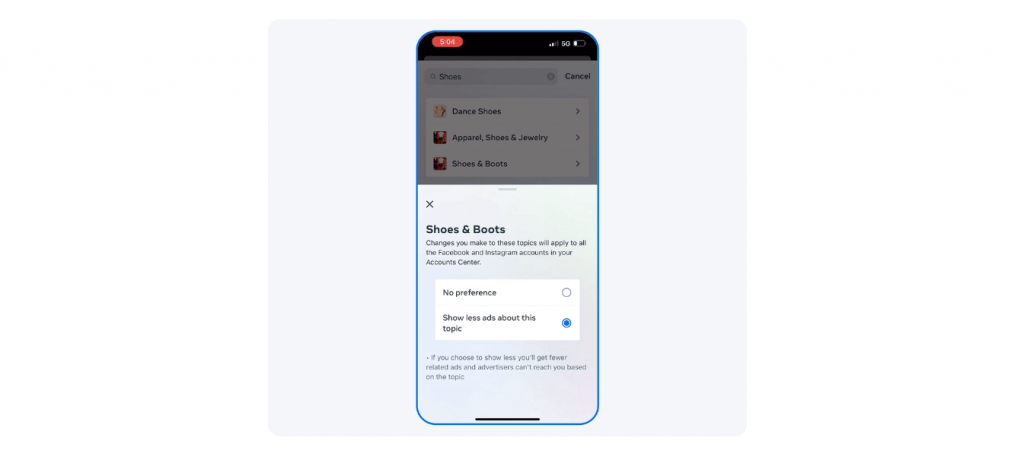Meta is updating how it serves ads to teens and is trying to make Facebook and Instagram safer for young adults.
Meta is building on prior changes to how advertisers can reach teens, which removed the ability to be targeted based on interests and activities. Moving forward, Meta will remove the option for targeting ads to teen users based on gender.
“Additionally, their (teens) engagement on our apps — like following certain Instagram posts or Facebook pages — won’t inform the types of ads they see.”
From now on, age and location will be the only information marketers can use to show adverts to teenagers. While there are use cases whereby these latest updates will be a positive development, there are corresponding ones, such as for not-for-profits and government comms, which will feel somewhat hard done by.
“We recognize that teens aren’t necessarily as equipped as adults to make decisions about how their online data is used for advertising, particularly when it comes to showing them products available to purchase.
For that reason, we’re further restricting the options advertisers have to reach teens, as well as the information we use to show ads to teens.”
Furthermore, ads showed based on in-app behaviour could result in inappropriate content being shown to young users while gender targeting could help reinforce stereotypes that aren’t welcome in the modern world.
A loss, but not a big loss
Meta’s new rules will reduce marketers’ ability to hone in on certain audiences as targeting by interests, activity, and gender is no longer available. However, Meta’s AI ad targeting should mean that you’ll be able to reach your audience just fine based on relevant factors.
Oddly, Meta does not mention reducing the ad load within young adults’ feeds. Therefore, one can only assume they’ll still be targeted with the same number of ads as before.
Ergo, the heavy lifting for youth audiences will probably be powered by Meta’s new Advantage suite of tools, rather than standard interest or demographic targeting.
More controls for teenagers
On the flip side, Meta is introducing teen-specific controls that will allow younger users to manage better the types of ads they see on Facebook and Instagram with Ad Topic Controls.
“Teens will be able to go to their Ad Preferences within Settings on both apps, and choose See Less or No Preference to further control the types of ads they see.”
Teenagers will be able to opt out of any topic they feel.
Certain subjects, like weight loss products, alcohol and financial products, are already off-limits to teenagers but now they can choose to see fewer ads about any topic at all.
Furthermore, they can choose to hide any or all ads for a specific advertiser.
Meta has also added a new privacy page with more information about the tools and privacy settings available to them.
“Our teen privacy center has additional resources to help teens understand and manage their privacy across our apps.”
Controls across the Meta suite
Facebook isn’t the only horse in the Meta stable to introduce teen protection. In 2021, Instagram released a suite of privacy rules.
First up, every account under 16 defaulted to a private account. Private accounts let the user control who sees or responds to their content, and private accounts give users control over who can follow them.
Second, Instagram made it more difficult for some adults to find young people’s accounts. Using technology developed by Insta, accounts belonging to adults flagged for ‘potentially suspicious behaviour’ won’t be able to interact with young people’s accounts or find them in Explore, Reels, or the Accounts Suggested For You tab – plus a bunch of other restrictions.
Finally, Insta has changed how advertisers can target teens. Now teens can only be targeted based on age, gender and location. Previous options, such as targeting based on interests or activity on third-party platforms, will no longer be available.
All in all, the changes shouldn’t impact marketers and advertisers too much. While there are now fewer parameters to target younger users with ads, AI tools should be able to bridge the gap. And in the name of keeping young people safe, it’s a small price to pay.




RECOMMENDED FOR YOU
[STUDY] ChatGPT Powers Work And Life
OpenAI, in collaboration with Harvard economist David Deming, has…
OpenAI, in collaboration with Harvard economist David Deming, has…
LinkedIn Tests New Premium Tools for SMBs
LinkedIn is quietly piloting a new Premium offering designed…
LinkedIn is quietly piloting a new Premium offering designed…
Meta Brings AI Video Editing to Instagram and Meta AI
Meta has launched a new AI-powered video editing feature…
Meta has launched a new AI-powered video editing feature…